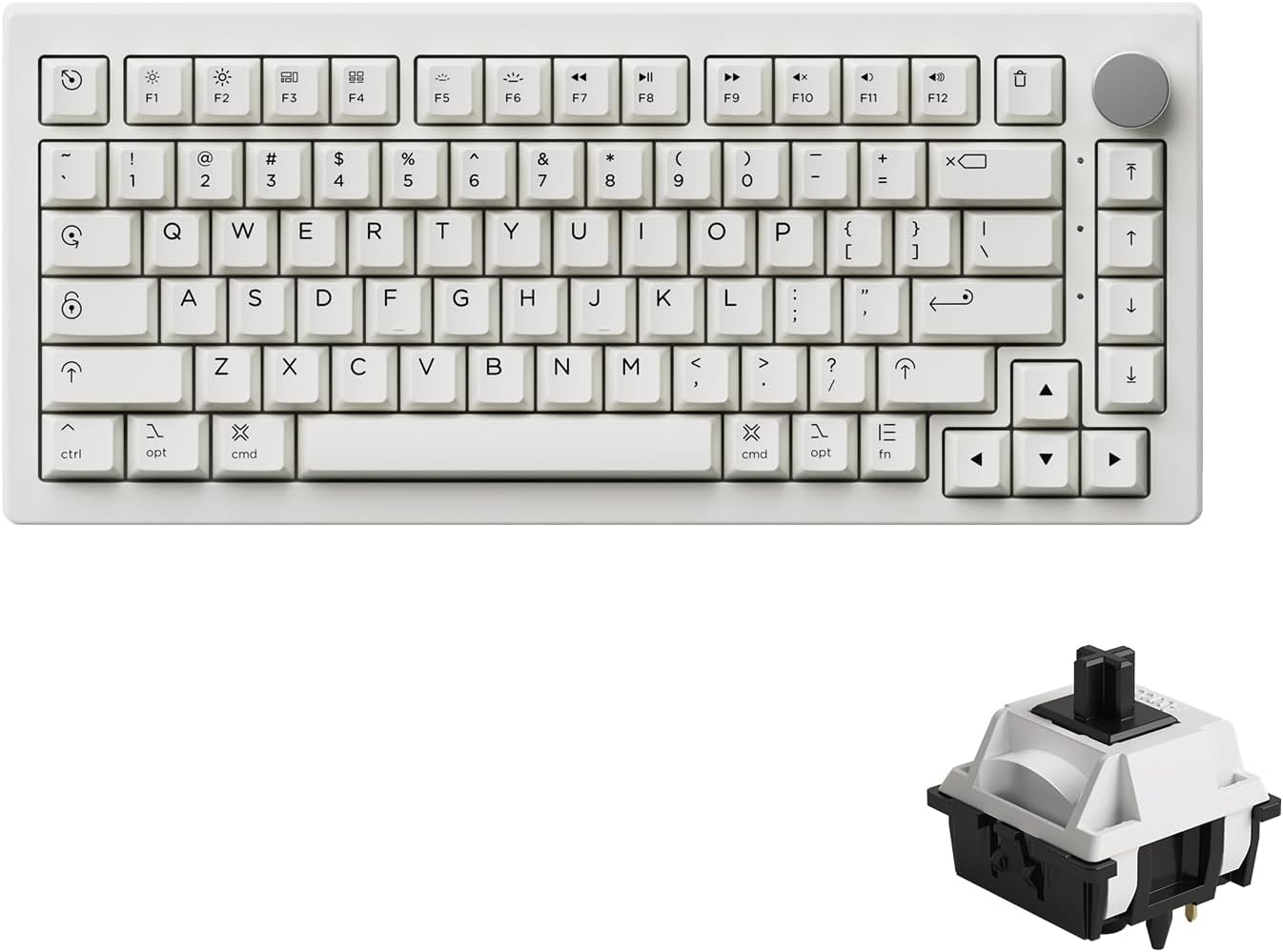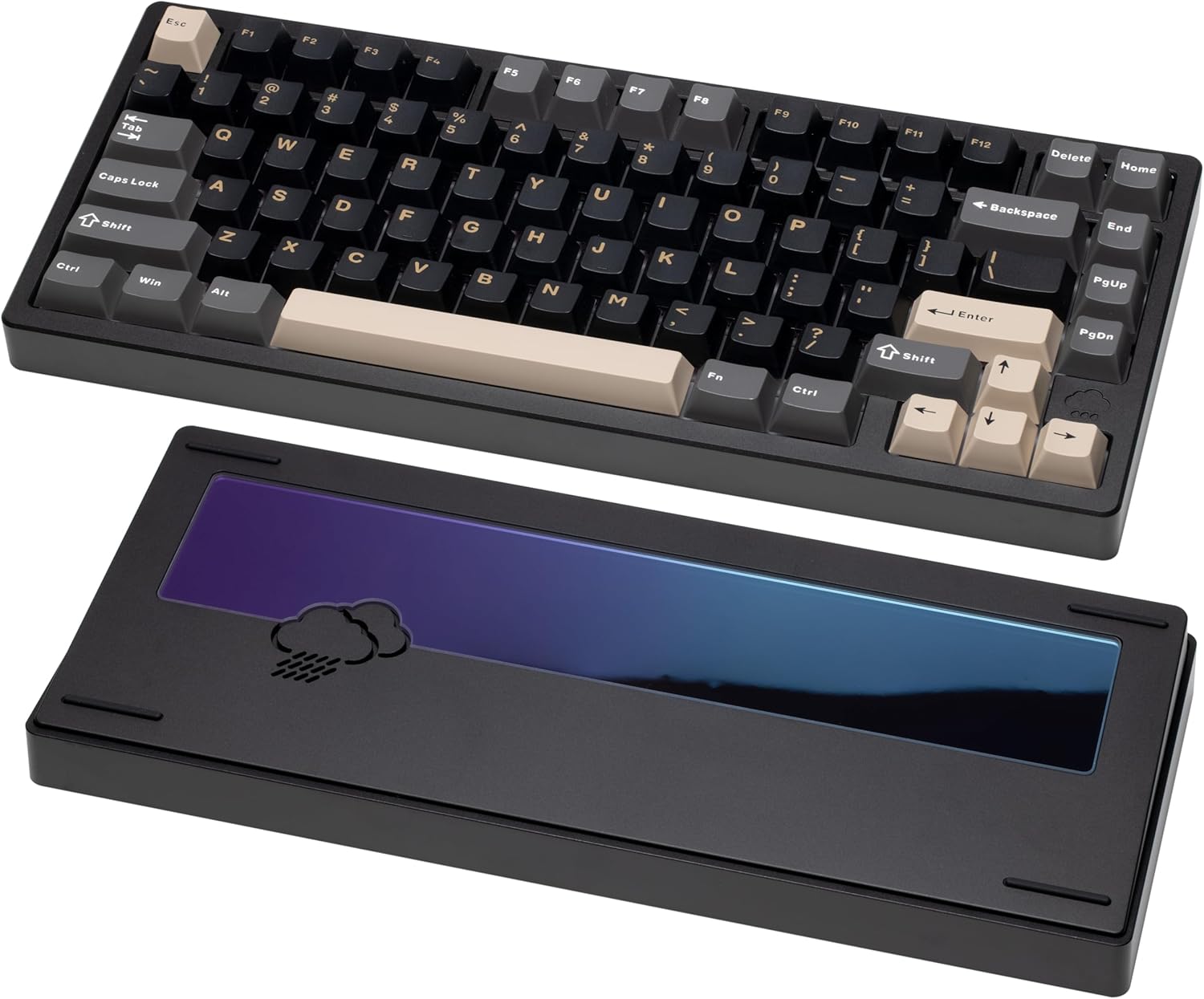Mechanical Keyboard Switch Types and Their Characteristics
So, you're diving into the world of mechanical keyboards? Awesome! One of the first (and most fun) things you'll discover is the incredible variety of keyboard switches. These little guys are the heart of your typing experience, dictating how a key feels, sounds, and performs. Let's break down the main types and explore some fantastic keyboard options along the way.
Understanding the Basics: What are Mechanical Keyboard Switches?
Unlike membrane keyboards, which use a rubber dome to register keystrokes, mechanical keyboards employ individual mechanical switches under each keycap. This results in a more tactile, responsive, and durable typing experience. Each switch consists of several parts, including the stem (which moves when you press the key), the spring (which provides resistance and rebound), and the housing (which holds everything together).
The Three Main Types of Mechanical Keyboard Switches
There are three primary categories of mechanical keyboard switches: linear, tactile, and clicky. Let's explore each in detail:
1. Linear Switches: Smooth and Silent Speed
Linear switches offer a consistent, smooth keypress from top to bottom, without any tactile bump or audible click. They are favored by gamers for their speed and responsiveness. Think of them as the sports cars of the keyboard world.
- Characteristics:
- Smooth, consistent keypress
- No tactile feedback
- Generally quieter than other types
- Fast actuation
- Pros:
- Excellent for fast-paced gaming
- Good for rapid typing once you get used to them
- Quieter operation (relatively speaking)
- Cons:
- Lack of tactile feedback can lead to typos for some users
- Can feel "mushy" to those who prefer more feedback
A great example of a keyboard featuring smooth linear switches is the EPOMAKER EA75. This 75% layout keyboard offers a fantastic typing experience right out of the box, thanks to its factory-lubed switches and gasket-mounted design. The tri-mode connectivity gives you the flexibility to use it wired, via Bluetooth, or with a 2.4GHz wireless connection. The rotary knob adds a touch of convenience for volume control or other customizable functions.
 Check Price on Amazon
Check Price on Amazon
2. Tactile Switches: The Feedback Masters
Tactile switches provide a noticeable bump when the key is actuated, giving you clear feedback that the keypress has registered. This is preferred by many typists and programmers who appreciate the added confirmation.
- Characteristics:
- Tactile bump upon actuation
- Provides feedback without an audible click
- Good balance between typing and gaming
- Pros:
- Reduces typos due to tactile feedback
- Comfortable for extended typing sessions
- Offers a satisfying typing experience
- Cons:
- Not as fast as linear switches for gaming
- Can be fatiguing for some users during very long sessions
The Keychron K2 HE is an excellent keyboard that can be configured with tactile switches. The Keychron K2 HE takes responsiveness to the next level with its Hall-Effect Gateron magnetic switches, allowing actuation as low as 0.1mm, and programmable via QMK/VIA. Its premium build quality and versatile connectivity options make it a top choice for serious typists and gamers alike.
 Check Price on Amazon
Check Price on Amazon
3. Clicky Switches: Loud and Proud
Clicky switches combine tactile feedback with a distinct audible click. They are the most divisive type of switch – some people love the sound and feel, while others find them annoying. If you're a fan of vintage typewriters, clicky switches might be right up your alley.
- Characteristics:
- Tactile bump upon actuation
- Audible click sound
- Provides the most feedback
- Pros:
- Very satisfying typing experience for some
- Clear indication of keypress
- Cons:
- Loudest type of switch, may not be suitable for shared spaces
- Can be distracting for some users
While the provided affiliate products don't explicitly feature clicky switches, many keyboards offer hot-swappable switch options, allowing you to easily install clicky switches on models like the AULA F99 or the Akko 5075B Plus Air. These keyboards provide a solid foundation for experimenting with different switch types. The AULA F99, with its large battery and gasket mount, ensures a comfortable experience no matter what switches you choose. The Akko 5075B Plus Air also offers a customizable knob, adding another layer of functionality to your setup.
 Check Price on Amazon
Check Price on Amazon
 Check Price on Amazon
Check Price on Amazon
Beyond the Big Three: Exploring Other Factors
Beyond the basic categories, several other factors influence the feel of a mechanical keyboard switch:
- Actuation Force: The amount of force required to activate the switch. Lighter actuation forces are faster but can lead to more typos. Heavier forces provide more resistance and can reduce typos.
- Travel Distance: The distance the key travels from top to bottom. Shorter travel distances are generally faster.
- Switch Material: The materials used in the switch construction can affect the sound and feel. Different plastics and metals can create subtle variations.
Hot-Swappable Keyboards: The Ultimate Experimentation Platform
If you're unsure which switch type is right for you, consider a hot-swappable keyboard. These keyboards allow you to easily swap out switches without soldering, making it easy to experiment with different types and find your perfect match. The WOBKEY Rainy 75 is an excellent choice for this, offering a premium build quality and a hot-swappable design, allowing you to fine-tune your typing experience to perfection.
 Check Price on Amazon
Check Price on Amazon
Which Switch is Right for You?
- Gamers: Linear switches for speed and responsiveness.
- Typists/Programmers: Tactile switches for feedback and accuracy.
- Those who love the sound: Clicky switches (if you don't bother those around you!).
- Everyone: Hot-swappable keyboards to experiment and find your perfect fit.
Visual Aids and Further Exploration
To truly understand the nuances of each switch type, I recommend searching for visual aids like switch charts that compare actuation force and travel distance. Video demos showcasing the sound of different switches can also be incredibly helpful.
Conclusion
Choosing the right mechanical keyboard switch is a personal journey. There's no one-size-fits-all answer. I encourage you to explore the different types, experiment with hot-swappable keyboards, and find the switches that feel best for you. Happy clacking!
Ready to take the plunge and upgrade your keyboard? Explore the affiliate links above to find the perfect mechanical keyboard for your needs. Or, leave a comment below and tell us about your favorite switch type!
Mechanical Keyboard Starter Guide
Ever wanted to learn about or build your own mechanical keyboard? This guide will show you everything you need to know.
Learn More